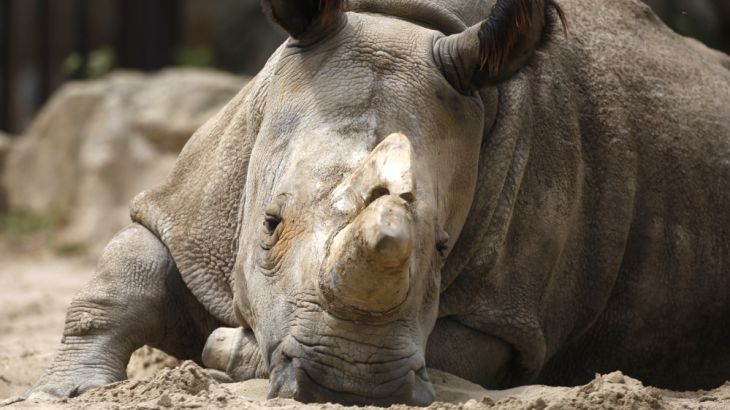
Can faux rhino horn help save the species?
As high demand for rhino horn continues to fuel illegal poaching, TechKnow investigates how science is fighting back.
For thousands of years, rhino horn has been coveted by people around the globe, primarily for its beauty and its perceived medicinal or special powers. Just like ivory, it has long been prized as decorative proof of status and wealth.
At the turn of the century, there were tens of thousands of rhino across Africa and Asia, but now, with a rhino horn fetching up to half a million US dollars on the black market, these animals are increasingly at risk of extinction.
Keep reading
list of 4 itemsCould shipping containers be the answer to Ghana’s housing crisis?
Are Chinese electric vehicles taking over the world?
First pig kidney in a human: Is this the future of transplants?
So how does rhino horn, which is made of keratin – basically the same protein that makes up our hair and fingernails – become worth more money than cocaine, heroin, gold and even platinum? And what can be done to stop rhino poaching?
This is a valuable product and it sells for more than the value of gold, by weight, in Vietnam.
Practitioners of traditional Chinese medicine have prescribed rhino horn as a “cure” for a range of illnesses from a fever to food poisoning, despite the lack of any solid scientific evidence to support its medical efficacy.
In the past decade, the demand for rhino horn in China and Vietnam grew – and the price rose.
“This is a valuable product and it sells for more than the value of gold, by weight, in Vietnam,” says John Baker, managing director of WildAide. Although it is illegal in Vietnam, acquiring rhino horn is also seen as status symbol and investment.
A recent report by Traffic, a wildlife trade monitoring group, suggested the use of rhino horn among wealthy urban Vietnamese men is one of the major drivers of rhino poaching.
Every night in South Africa’s Kruger National Park, home to the world’s largest population of rhino, two or three animals are shot by poachers. And the closer the rhino comes to extinction, the more horn becomes a scarce resource with the inevitable rise in price.
One of the latest and controversial strategies to stop the use of Rhino comes from a US bio-tech start-up in San Francisco called Pembient. Their 3D printer techniques will help manufacture horns that will eventually “pass” as the real deal. The company hopes to flood the market with fake rhino horn in order to stop the demand for the genuine product.
“We want to build something that’s microscopically and molecularly the same as a rhinoceros horn,” says Pembient’s CEO Mathew Markus. Thus, by flooding the market with its biofabricated horns, Pembient hopes the prices for rhino horns will drop dramatically.
However, Baker is not convinced: “You can change people’s attitudes, especially in a country like Vietnam where so many of the people are young. What we don’t want to do is now give the young people a reason to start using rhino horn because it’s ‘OK’ to use rhino horn.”
Can fake rhino horn truly pass as the real thing? And can synthetic horn save the rhino from extinction?
TechKnow visits Pembient’s San Francisco lab, obtains their fake rhino prototype and tests them against a real rhino sample from an independent lab to see if the two match.